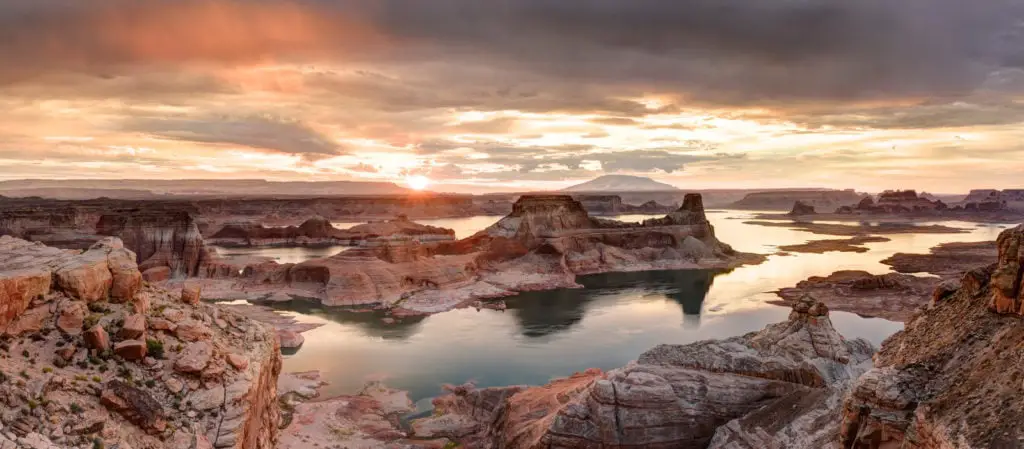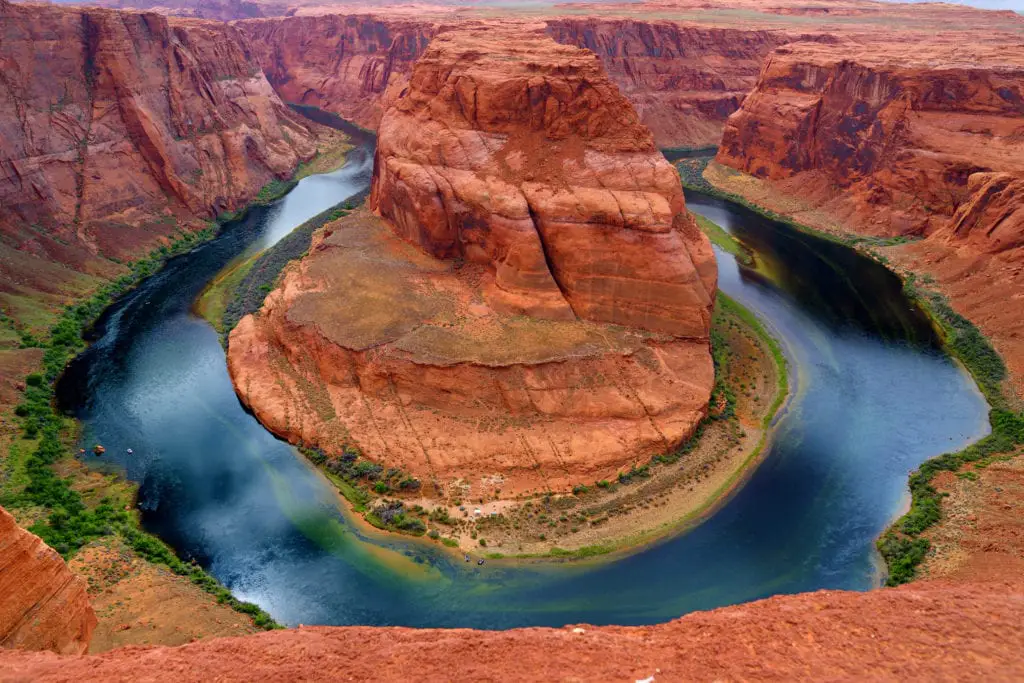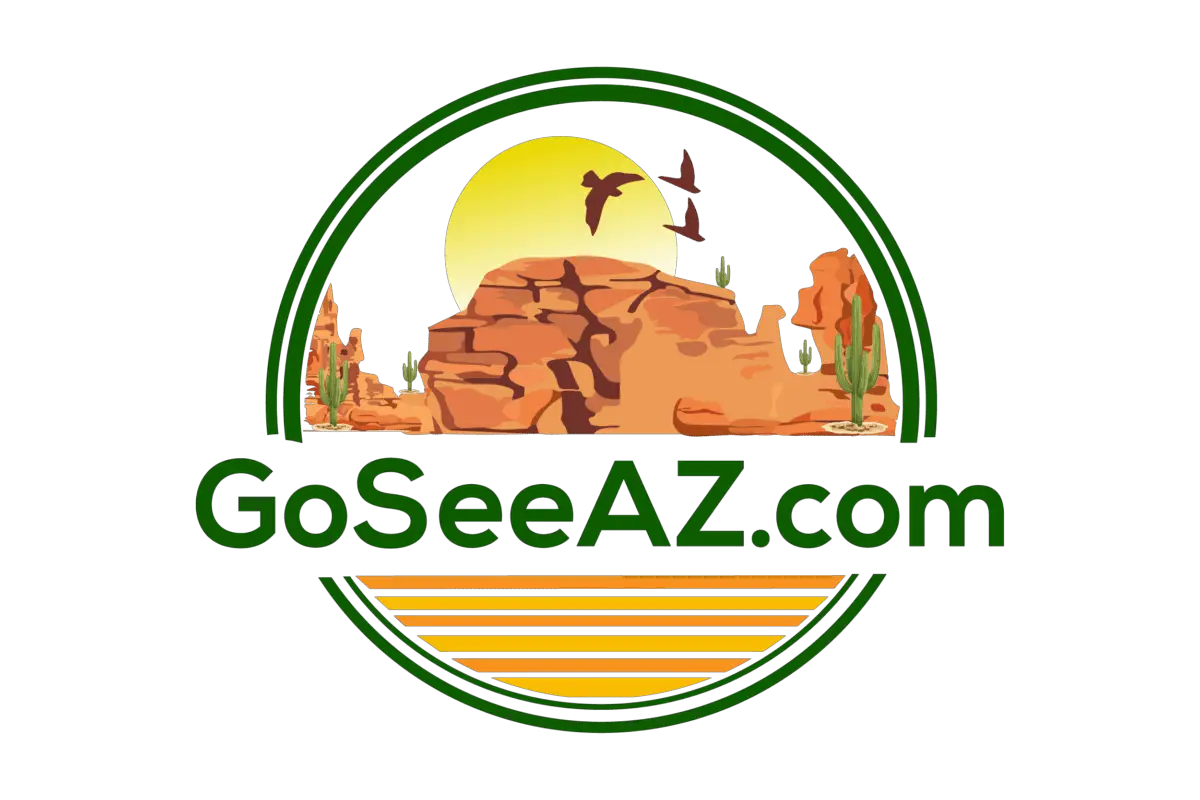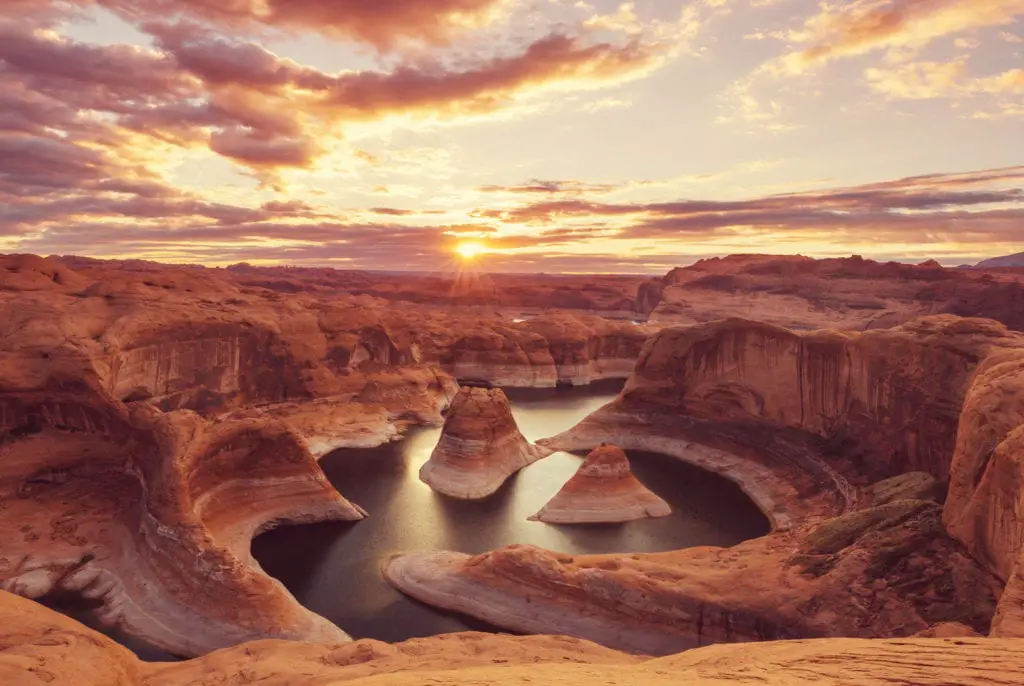One of the less-known but stunningly beautiful and diverse national parks is the Glen Canyon National Recreation Area. Glen Canyon National Recreation Area has a ton of options to offer its visitors. You’ve probably heard of Yellowstone National Park, Grand Canyon National Park, Yosemite National Park, and many other famous United States national parks. The United States has an incredible amount and variety of national parks that both domestic and international visitors can enjoy year-round, and Glen Canyon National Recreation Area is definitely one of them.
As it’s located so close to the Grand Canyon National Park, Canyon Lands, Zion, and Capitol Reef National Parks many visitors choose to forgo visiting it. We’re here to tell you that it is a big mistake to do that. And while we’re talking here, we might as well let you in on all of the secrets:
- What the Glen Canyon National Recreation Area is known for
- The top spots to see
- Hiking/Trail information
- Camping information
- Where to stay
Keep reading and by the end of this article, we’re sure you’ll be so intrigued you’ll be booking a trip to go to the Glen Canyon National Recreation Area soon.

What is Glen Canyon National Recreation Area known for?
Located in southern Utah and northern Arizona, the Glen Canyon National Recreation Area is a huge national park. Specifically, it is a recreation unit and conservation unit of the United States National Park Service. Established in 1972, its main purpose was to provide visitors enjoyment and usage of the area, as well as preserve the area’s historic, scientific, and scenic offerings.
The Glen Canyon National Recreation Area covers over 1.25 million acres – yep, we told you it’s huge! It encompasses the area around the lower Cataract Canyon and Lake Powell in Arizona and Utah. While it is mostly desert land, the Colorado River and its tributaries (Escalante River, Dirty Devil River, Paria River, etc.) run through the Colorado Plateau, forming amazingly diverse and complex desert and water landscapes/environments.
Particularly special are its water environments, created by Lake Powell and the rivers, as they offer visitors a unique experience to swim, play, and learn about the Glen Canyon National Recreation Area and its science. Visitors come to visit this amazing area year-round for an unparalleled experience of recreational and educational land and water activities.
The Glen Canyon National Recreation Area offers us a look into over 10,000 years of geological and natural history. The area is dominated by the Navajo Sandstone, Wingate Sandstone, and the Kayenta Formation, which make up the Glen Canyon Group. Within the Glen Canyon National Recreation Area is the Rainbow Bridge National Monument, an incredibly unique natural bridge with both a rainbow form and appearance.
Are you convinced to visit yet? Don’t worry, we have more for you.
The Glen Canyon National Recreation Area is located within American Indian lands, meaning that there is a huge cultural component to any visit there. For example, Rainbow Bridge specifically is a spiritually occupied formation for many indigenous peoples. Not only can you learn about the geological and scientific history of Rainbow Bridge, but you can also learn about the traditional beliefs and cultural identities that are inseparable from the formation.
Along with 10,000 years of scientific history, the area provides a look into 10,000 years of human history. Descendant communities have resided on the land for tens of thousands of years. There, you can learn about traditional American Indian communities, exploration, adaptation, and ancient and modern traditions.
As you can see, the Glen Canyon National Recreation Area really does have it all — geology, science, culture, and history; what more could you ask for from a park?
What are the top spots to see in Glen Canyon National Recreation Area?
With its gigantic size, it’s not surprising that there is a lot to do in Glen Canyon National Recreation Area. Whether you’re walking, swimming, fishing, or biking, the park offers spectacularly diverse landscapes for you to explore. You should allow at least a few days to visit all that you want to see in Glen Canyon National Recreation Area.
Here are the top spots that you should visit when in Glen Canyon National Recreation Area:
- Lake Powell
- Horseshoe Bend
- Lees Ferry
- Rainbow Bridge
- Glen Canyon Dam
- Orange Cliffs
Lake Powell
Located in both Utah and Arizona is Lake Powell, a reservoir on the Colorado River. Second only to Lake Mead, it is one of the largest man-made reservoirs in the United States. It’s a popular destination in Glen Canyon National Recreation Area and attracts over two million visitors each year. One of the best times to visit Lake Powell is in the summer, as temperatures reach over 80 degrees Fahrenheit, making it a perfect swimming spot.
Not only can you swim in the lake, but you can also go boating, fishing, and kayaking.
Here are some tips you should keep in mind if you choose to partake in any of those activities:
- You must have a valid Utah or Arizona fishing license to fish
- Fishing is prohibited in some areas of the lake
- You can rent a boat or use a private boat on the lake, even staying in a houseboat for a few days is a great option
- There are five marinas on Lake Powell; four of them have launch ramps
- You can take day trips or multiple-day trips on a kayak; make sure you read and abide by the rules and regulations
- There are groups and guided tours available for kayaking
Above all, make sure that you read up on all of the rules and safety regulations, as well as the weather conditions before doing an activity on Lake Powell.

Horseshoe Bend
Have you ever seen the picturesque panorama of Horseshoe Bend? If so, you already know that it is a must-see when visiting Glen Canyon National Recreation Area. It is one of the most, if not the most, well-known and popular spots to visit in the park. Horseshoe Bend is a part of the Colorado River below the rim in the park. For millions of years, the river cut through layers of sandstone to make this beautiful 270 degree, horseshoe-shaped bend in Glen Canyon National Recreation Area. To reach the prime viewing spot, you can take a short, but challenging hike to the lookout.

Lees Ferry
Located less than ten miles south of Utah is Lees Ferry, in Coconino County, Arizona. Lees Ferry is a site on the Colorado River and the only place in the Glen Canyon National Recreation Area where visitors can drive right to the Colorado River. It is a great starting place for a fishing, kayaking, or boating trip on the river. Historically, Lees Ferry is an important site, as it served as a crossing point from 1872 to 1928. There are still some buildings standing from that time, so expect both a culture and nature trip if you visit Lees Ferry.
Rainbow Bridge
As you probably already guessed, Rainbow Bridge is one of our top spots to see. Rainbow Bridge is located within the Glen Canyon National Recreation Area, in the 160 square acres of land making up the Rainbow Bridge National Monument. It is an increasingly popular tourist destination, with over 85,000 visitors coming to see it every year. Additionally, it is one of the world’s largest natural bridges at 42 feet high, and it is in the shape of a rainbow! Could it get any cooler?
When visiting Rainbow Bridge, remember that it is considered a sacred place to many indigenous peoples in the United States. The National Park Service requests that visitors are respectful when visiting Rainbow Bridge for that reason. Rainbow Bridge is open year-round from sunrise to sunset, and there is no fee to visit.
Glen Canyon Dam
While the Hoover Dam is a more popular tourist destination, don’t overlook the Glen Canyon Dam, the second-highest concrete arch dam in the United States. In fact, the Glen Canyon Dam sits at 710 feet, only 16 feet shorter than the Hoover Dam. The Glen Canyon Dam can hold 26.2 million acre-feet of water and was constructed to utilize the Colorado River for its water and power. To visit the dam, you can take a guided tour.

Orange Cliffs
Last but not least on our top spot recommendation is Orange Cliffs, a scenic desert county within the Glen Canyon National Recreation Area. Orange Cliffs isn’t the most popular destinations in the park, but it is one of the most unique. You can hike around the land, likely without encountering many others, and observe the wildlife and plant life in the desert. It is recommended to visit in spring or fall, as the temperatures are extreme in the summer (up to 110 degrees Fahrenheit) and the winter (down to -20 degrees Fahrenheit). The most popular activity in Orange Cliffs is to hike or walk, so be sure to pack plenty of snacks and definitely don’t forget a lot of water if you choose to do that.
Hiking/Trails Information
Due to its size, Glen Canyon National Recreation Area has plenty of hiking options, ranging from short one-hour hikes to multi-day backpacking trips. However, the park does not have any maintained trails, therefore all hikes and trails are solely suggested walks — including the multi-day trips. So, if you decide to take on a more challenging hike, be sure that you are properly prepared for it.
Day Hikes
There are a lot of day hikes to choose from, but here are four of our favorites.
- Horseshoe Bend: Must-do hike in the park. Take a 1.5-mile round-trip hike to see Horseshoe Bend from above. You will be walking up a steep, sandy hill, and there is little shade, but it’s worth it! Trail Level: Easy to Moderate
- Hanging Garden: This 1-mile round-trip hike is a great short hike that reaps a lot of benefits. Located in the Page/Wahweap Area, this hike will take you to a hanging garden located on a mesa above Lake Powell. It is recommended to walk quietly to see and hear more wildlife. Trail Level: Easy
- Cottonwood Road: The popular Cottonwood Road is a great hike for those of you looking to explore the diversity offered. With a variety of trails of different distances, you can see badlands, the Paria River/cottonwood trees, above the Cockscomb, and stone monuments on this hike. Trail Level: Varies
- Paria Canyon: More serious hikers should consider the Paria Canyon. The canyon is 45 miles one-way, so it is not suitable for a day-hike. But, you can do a day trip into and out of the canyon, or opt for an overnight hike. Trail Level: Challenging
Additionally, consider the following hikes:
- Reflection Canyon (Challenging; 15.7 miles)
- The Golden Cathedral (Moderate; 10.6 miles)
- Coyote Gulch (Moderate to Challenging; 12.6 miles)
- Broken Bow Arch (Moderate; 6.3 miles)
- Spencer Trail Lookout (Challenging; 3.9 miles)
- Crack in the Wall (Easy; 1.9 miles)
Whatever you choose to do, make sure you’re well-versed with the rules, regulations, and recommendations provided by the National Park Service. As none of the trails are maintained, you’re likely to find solitude when doing these hikes, which can be great. But, safety comes first, and you want to make sure you’re prepared for the weather and landscape.
Camping Information
If you’re interested in longer backpacking trips or just want to camp, you’ll need to know this important information.
There are seven campgrounds operated and run by the National Park Service. They do not take reservations.
- Lees Ferry Campground: 51 designated sites, no hookups, grills on-site, bathrooms available, water available, launch ramp 2 miles away, $20 per night per site
- Lone Rock Beach Primitive Camping: No designated sites, ten toilets, one wheelchair-accessible comfort station, outdoor shower, off-road vehicle area, seasonal potable water, $14 per night per vehicle
- Beehive Campground: 6 designated sites, no hookups, no bathrooms, no campfires, $14 per night per site, 3-night camping limit
- Stanton Creek, Hite, Farley, and Dirty Devil Primitive Camping Areas: No designated sites, seasonal vault toilets, $12 per night
Additionally, there are four campgrounds that are operated by park concessioners.
- Wahweap RV & Campground: 112 sites with no hookups, 139 sites with hookups, 36 tent-only sites, 6 group sites, restrooms, grills/fire rings, bathroom, laundry, shower, potable water; registration and reservation required, fees apply
- Bullfrog RV & Campground: 78 campsites, potable water, RV park with 24 sites and full hookups, restrooms and showers; registration and reservation required, fees apply
- Halls Crossing RV & Campground: 24 RV spaces with full hookups, 42 campsites, restrooms, grills, potable water, showers; first-come, first-serve for campsites, RV spaces can be reserved, fees apply
- Hite Outpost RV & Campground: 21 sites with no hookups, 14 sites with full hookups, RV rentals, showers, water access, fire rings/grills; first-come, first-serve or make a reservation in advance
Finally, primitive camping is allowed on Lake Powell in undeveloped areas or on the Colorado River between Lees Ferry and the Glen Canyon Dam, as well as dispersed camping throughout the Backcountry. Read on all of the rules and guidelines here.
Where to stay in Glen Canyon National Recreation Area
If camping isn’t for you, you’ll need a place to stay when you take your trip to Glen Canyon National Recreation Area. Most common for non-camping tourists are hotels, and there are lots and lots of hotel options for you. Whether you like to splurge at a luxury resort or spring for a more affordable choice, you’ll be able to find a hotel for your trip. If you are visiting during peak season (end of spring, all of summer, beginning of fall), it’s best to book in advance. If hotels aren’t your accommodation of choice, consider an AirBnB — these are getting more popular each year.
Our recommendation, however, is to get your camp on. Whether you rent a comfortable RV or get out your old tent, you’ll want to spend as much time in the canyon as possible. By camping, you can experience all nature has to offer, from sunrise to sunrise.
Okay, are you ready to book your trip yet? We told you! Glen Canyon National Recreation Area is a gem within the American southwest. Whether you’re in Utah, Arizona, or across the world, this reservation deserves a visit.

